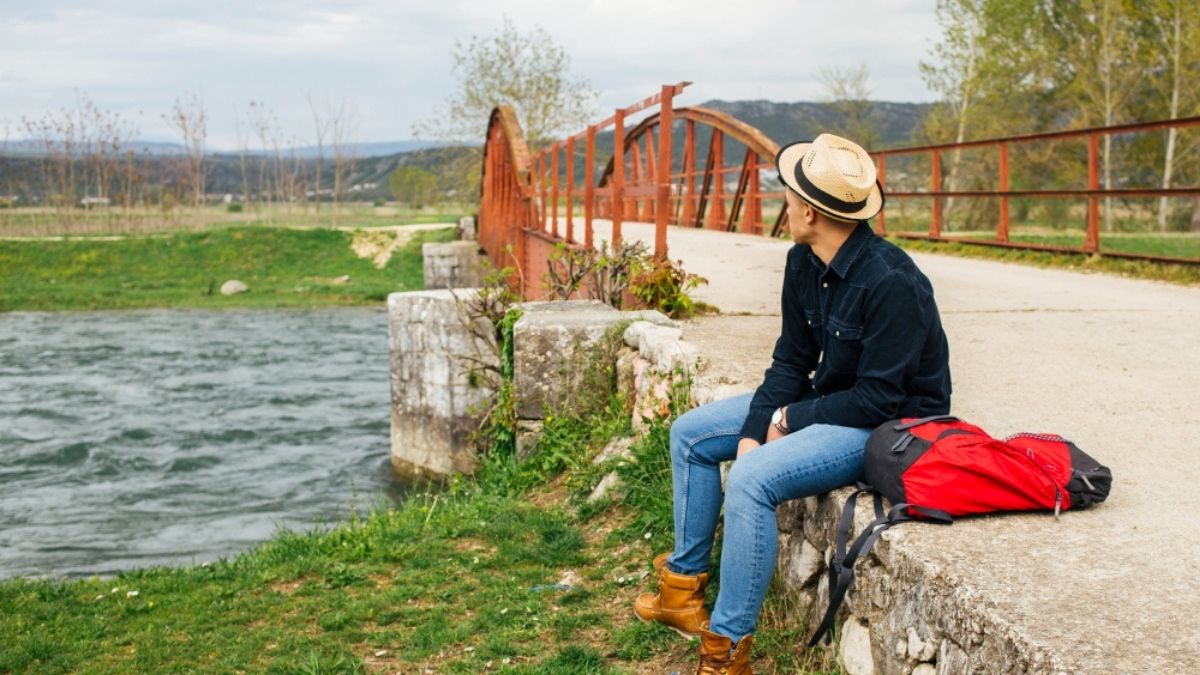Why Do Small Rural Towns Become Tourist Traps?, Small rural towns across America are experiencing a peculiar transformation. Once-quiet communities that survived on agriculture, mining, or manufacturing now find themselves invaded by tour buses, souvenir shops, and crowds of visitors wielding cameras. The quaint main streets that locals once navigated with ease become congested thoroughfares lined with gift shops selling mass-produced trinkets.
This phenomenon raises important questions about economic survival, cultural preservation, and community identity. While tourism can breathe new life into struggling rural economies, it often comes at a cost that fundamentally alters the character of these towns. Understanding why do small rural towns become tourist traps requires examining the complex interplay of economic necessity, historical preservation, and market forces that drive this transformation.
The journey from authentic rural community to tourist destination rarely happens overnight. It typically begins with a town’s unique assets—perhaps historic buildings, natural beauty, or cultural significance—combined with economic pressures that force communities to seek alternative revenue sources. As traditional industries decline, tourism emerges as an attractive option, promising economic revitalization without the environmental concerns of heavy industry.
However, the path from sustainable tourism to tourist trap status is often shorter than communities anticipate. What starts as an effort to share local heritage and generate modest income can quickly spiral into a commercialized version of rural life that bears little resemblance to the authentic community experience that originally attracted visitors.
Historical Context: The Evolution of Rural Tourism
The transformation of rural towns into tourist destinations has deep historical roots in America. During the late 19th and early 20th centuries, the advent of railroad transportation made remote rural areas accessible to urban dwellers seeking respite from industrial city life. Towns along popular routes began adapting their offerings to accommodate visitors, often highlighting their pastoral charm and simpler way of life.
The post-World War II boom in automobile ownership accelerated this trend dramatically. Suddenly, families could venture into previously isolated rural areas for weekend getaways and vacations. Small towns that had struggled with population decline and economic stagnation saw tourism as a lifeline—a way to capitalize on their most abundant resources: space, natural beauty, and a slower pace of life.
Many rural communities initially approached tourism with genuine intentions to share their authentic local culture and history. Local residents opened bed-and-breakfasts in their family homes, converted barns into antique shops, and organized festivals celebrating regional traditions. These early efforts often maintained the genuine character that made these towns appealing to visitors in the first place.
The shift toward tourist trap status typically occurs when external commercial interests recognize the profit potential in these emerging destinations. Chain restaurants, franchise gift shops, and theme-based attractions begin to replace locally-owned businesses. The town’s authentic character becomes commodified, packaged, and sold back to visitors as an artificial representation of rural life.
Economic Factors: The Double-Edged Sword of Tourism Revenue
The economic motivations behind rural towns’ transformation into tourist traps are both understandable and complex. For many communities, tourism represents one of the few viable economic alternatives as traditional rural industries continue to decline. Agriculture has become increasingly consolidated, manufacturing jobs have moved overseas or to urban centers, and natural resource extraction has either been depleted or automated to require fewer workers.
Tourism offers several immediate economic benefits that make it attractive to struggling rural communities. It creates jobs in hospitality, retail, and service sectors that can employ residents with various skill levels. Unlike manufacturing, tourism doesn’t require massive infrastructure investments or environmental permits. The revenue generated by tourist spending circulates through the local economy, supporting everything from restaurants and shops to gas stations and lodging facilities.
However, the economic benefits of tourism come with significant drawbacks that often aren’t fully considered during the initial planning stages. Tourism jobs are frequently seasonal, low-wage, and lack benefits. The influx of tourist dollars can drive up local property values and cost of living, making it difficult for longtime residents to afford housing in their own communities. Local businesses may find themselves competing with chain stores and franchises that have greater resources and marketing power.
The pressure to generate ever-increasing tourism revenue can create a cycle where communities continuously add more attractions, shops, and services to capture visitor dollars. This expansion often occurs at the expense of the authentic local character that originally attracted tourists. Towns may find themselves trapped in a cycle where they must maintain high visitor volumes to support their tourism-dependent economy, even as the increasing commercialization drives away the type of tourists who appreciate authentic rural experiences.
Tax revenue from tourism can provide crucial funding for local services and infrastructure improvements. However, this dependence on tourist dollars makes communities vulnerable to economic fluctuations, seasonal variations, and external factors like gas prices or national economic downturns that affect travel patterns.
Sociological Impact: When Tourism Changes Community Identity
The transformation of rural towns into tourist destinations creates profound sociological changes that extend far beyond economic considerations. These changes affect community identity, social structures, and the daily lives of longtime residents in ways that are often irreversible.
One of the most significant impacts is the gradual displacement of local culture by a commercialized version designed for tourist consumption. Authentic local traditions may be modified, simplified, or exaggerated to make them more appealing to visitors. Traditional festivals that once served as genuine community celebrations become performances staged for tourist audiences. Local craftspeople may find themselves producing souvenirs rather than functional items for their neighbors.
The influx of tourists can create tension between visitors and residents, particularly when tourist volumes overwhelm local infrastructure and services. Residents may find their favorite restaurants crowded with tourists, their regular shopping destinations converted to souvenir shops, and their quiet streets clogged with traffic. This can lead to resentment and a sense that tourists are taking over their community.
Property values often increase in tourist destinations, which can force longtime residents to relocate to more affordable areas. This displacement breaks up established social networks and community connections that took generations to develop. Young adults who grew up in these communities may find they cannot afford to return after college or start families in their hometown.
The service economy that develops around tourism can also alter social hierarchies within rural communities. Traditional sources of respect and status—such as successful farming, skilled trades, or community leadership—may be overshadowed by tourism-related businesses. Long-established families may find their social standing diminished if they haven’t successfully adapted to the tourism economy.
Tourism can also create a two-tier community structure where there’s a clear divide between the “front stage” areas designed for tourists and the “backstage” areas where residents actually live and work. This division can lead to a sense of living in a performance rather than an authentic community.
Case Studies: Success Stories and Cautionary Tales
Examining specific examples of rural towns that have navigated the transition to tourism destination provides valuable insights into both successful strategies and common pitfalls.
Successful Balance: Stowe, Vermont
Stowe represents a rural community that has managed to maintain much of its authentic character while developing a substantial tourism economy. The town has preserved its working farms and local institutions while developing ski resorts and seasonal attractions that complement rather than replace traditional land uses. Local zoning regulations limit chain businesses and encourage architectural styles that maintain the town’s historic character. Community leaders actively involve residents in tourism planning decisions, ensuring that tourism development serves local needs as well as visitor expectations.
The Tourist Trap Warning: Gatlinburg, Tennessee
Gatlinburg illustrates how rural tourism can spiral into tourist trap status. Once a small mountain community serving as a gateway to the Great Smoky Mountains, Gatlinburg has become a dense concentration of theme attractions, chain restaurants, and souvenir shops. While the town generates substantial tourism revenue, much of the authentic Appalachian culture has been replaced by commercialized entertainment. The natural beauty that originally attracted visitors is now largely hidden behind neon signs and traffic congestion.
Preservation Success: Sturbridge, Massachusetts
Sturbridge has maintained its rural character by focusing tourism around its historic village museum rather than allowing commercial development to sprawl throughout the community. This approach preserves the town’s residential areas and working landscapes while providing visitors with an authentic historical experience. The community has been able to capture tourism revenue while maintaining clear boundaries between tourist areas and local neighborhoods.
Economic Dependence Challenge: Branson, Missouri
Branson’s transformation from a small Ozark community to a major entertainment destination demonstrates both the opportunities and risks of tourism dependence. While the town has generated substantial economic growth, its economy is now almost entirely dependent on tourist spending. This dependence makes the community vulnerable to external economic factors and limits economic diversification opportunities.
Strategies for Sustainable Tourism: Preserving Character While Growing Economically
Rural communities can avoid the tourist trap syndrome by implementing thoughtful strategies that balance economic development with community preservation. These approaches require careful planning, community involvement, and long-term thinking rather than pursuing quick tourism revenue.
Community-Controlled Development
Successful rural tourism destinations maintain local control over development decisions. This includes establishing zoning regulations that preserve the town’s character, limiting chain businesses that could overwhelm local enterprises, and requiring new developments to complement existing architecture and land uses. Community input should be actively sought and incorporated into all tourism planning decisions.
Authentic Experience Focus
Rather than creating artificial attractions, communities should focus on sharing their genuine assets and culture. This might include working farms that offer educational tours, local artisans demonstrating traditional crafts, or festivals that celebrate actual community traditions. Authentic experiences tend to attract visitors who respect and appreciate local culture rather than those seeking generic entertainment.
Economic Diversification
Communities should avoid becoming too dependent on tourism revenue by maintaining and developing other economic sectors. This might include supporting local agriculture, encouraging small-scale manufacturing, or developing remote work opportunities that allow residents to earn income from outside sources while remaining in the community.
Infrastructure Planning
Tourism development should include adequate planning for infrastructure needs such as parking, public restrooms, waste management, and traffic flow. Communities that fail to address these practical concerns often find themselves overwhelmed by visitor impacts that create negative experiences for both tourists and residents.
Seasonal Balance
Developing attractions and events throughout the year can help communities avoid the boom-and-bust cycle of seasonal tourism. Year-round economic activity provides more stable employment and revenue while reducing the intensity of peak season impacts on residents.
Visitor Education
Successful rural tourism destinations actively educate visitors about local culture, history, and appropriate behavior. This can include interpretive signs, visitor center programs, and local guides who share authentic stories and knowledge. Educated visitors are more likely to respect the community and contribute positively to the local experience.
Why Do Small Rural Towns Become Tourist Traps?: Finding Balance in a Changing World
The question of why do small rural towns become tourist traps ultimately reflects broader challenges facing rural America. As traditional economic foundations continue to erode, communities must find new ways to sustain themselves while preserving the qualities that make them unique and valuable.
The most successful rural tourism destinations will be those that approach tourism as one element of a diversified economy rather than a complete replacement for traditional industries. These communities will maintain their authentic character by involving residents in tourism planning, controlling development patterns, and ensuring that tourism enhances rather than overwhelms local culture.
Technology offers new opportunities for rural communities to balance tourism with other economic activities. Remote work capabilities can allow residents to earn income while maintaining their rural lifestyle. Digital marketing tools can help communities attract visitors who appreciate authentic experiences rather than generic tourist attractions.
Climate change and urbanization trends may increase demand for rural tourism experiences as people seek connections with nature and simpler ways of life. Rural communities that prepare thoughtfully for this increased interest will be better positioned to capture economic benefits while avoiding the tourist trap pitfalls that have affected other destinations.
The transformation of rural towns into tourist destinations will continue as economic pressures persist and transportation access improves. However, communities that learn from both successful examples and cautionary tales can chart a course that preserves their essential character while building sustainable economic foundations for future generations. The key lies in remembering that the qualities that make rural towns attractive to tourists—authenticity, community connection, and connection to the land—are the same qualities that make them valuable places to live.
Conclusion
In conclusion, striking a balance between economic development and the preservation of rural character is essential for ensuring long-term sustainability. By fostering thoughtful tourism strategies and prioritizing the unique attributes of rural communities, towns can thrive without losing their identity. It is through collaborative efforts, careful planning, and a commitment to local values that these communities can secure a vibrant and prosperous future for generations to come.






